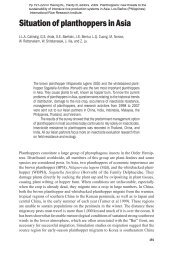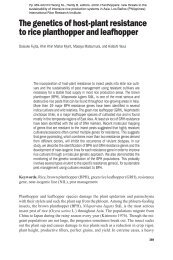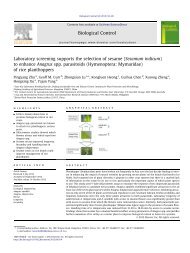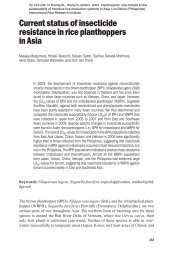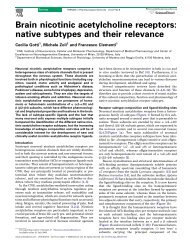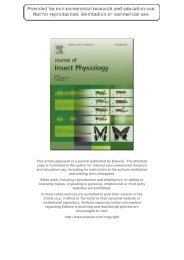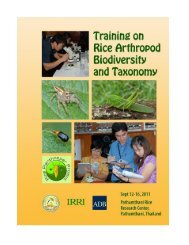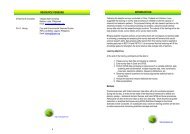Final Report Appendix 5 (Ho Chi Minh City Revised ... - Ricehoppers
Final Report Appendix 5 (Ho Chi Minh City Revised ... - Ricehoppers
Final Report Appendix 5 (Ho Chi Minh City Revised ... - Ricehoppers
Create successful ePaper yourself
Turn your PDF publications into a flip-book with our unique Google optimized e-Paper software.
10.5 cm<br />
28.5 cm<br />
Flat bar metal frame<br />
(1/8 x ¼ inch)<br />
.<br />
Conduit pipe with holes<br />
(1/2 inch diameter)<br />
PVC pipe (plastic)<br />
(3/4 inch diameter)<br />
Yellow pan trap<br />
Many small day-active insects are attracted to the color yellow. Yellow pan traps collect<br />
insects that are attracted to the color. They are inexpensive and simple means of passively<br />
sampling insects in an area. This trapping method uses small pans filled with a mixture of<br />
water and liquid detergent. The pans are then placed on the ground in conspicuous places in<br />
the morning. When flying insects land on the surface of the water they rapidly sink and<br />
drown. At the end of the day or after 1-2 days, the water is strained through a fine sieve and<br />
the specimens are collected.<br />
Sampling arthropods by yellow pan trap<br />
1. Use 500 ml circular plastic ‘take away food container’ (with 17 cm diameter and 5 cm<br />
depth). Deeper bowls experience less evaporation in hot climates.<br />
2. Cut one hole near top of bowl and cover with mesh. In excessive rain this allows<br />
water to flow out of the bowl without losing any samples.<br />
3. Paint with two top coats of yellow UV paint (e.g. RJ London acrylic spray paint).<br />
4. Place bowls at approximately the same height of vegetation (50-100 cm) or just below<br />
the canopy level using a wire frame.<br />
5. Add a mixture of 400 ml water and 1.2 g of sodium benzoate preservative and one<br />
drop of liquid detergent (washing-up liquid).<br />
6. Cover each bowl with a coarse wire mesh to prevent scavanging of insects by birds.<br />
7. Leave out for 24 hrs at a time.<br />
8. Use an aquarium net or fine sieve to collect the insects and place in 100 % ethanol.



